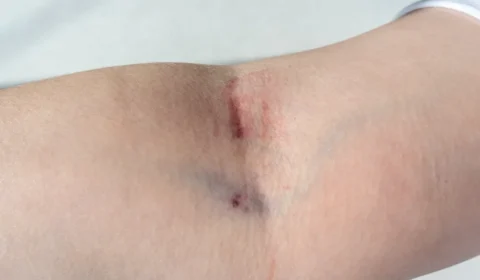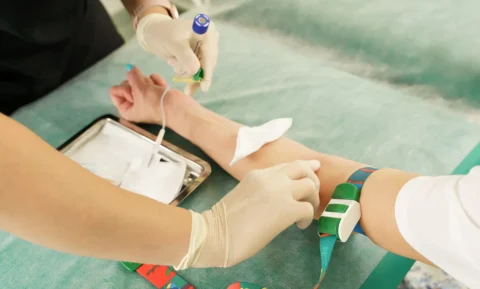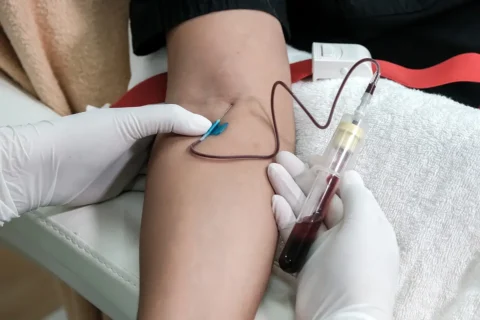Have you ever wondered about the factors healthcare professionals consider when choosing a needle for a procedure? Age, vein size, the procedure itself, and patient comfort all play a part. In this article, we will delve into the age-related specifics of one particular type of needle—the large butterfly needle.
So how old do you need to be to safely use it? Smaller vein size in children means equally smaller gauge needles are needed, while fragile veins in the elderly require appropriate needle gauge selection and proper technique. With the right precautions and procedures, these needles can be used effectively across age groups.
What Is a Butterfly Needle and When Is It Used?
A butterfly needle is a specialized hypodermic needle connected to flexible tubing and two plastic wings.
The needle is used for blood draws, intravenous medication, fluid delivery, and central line access. On the other hand, the attached tubing allows for easy connections to IV lines, infusion sets, or vacuum tubes for blood collection.
The two plastic wings provide stability and control during needle insertion and dwell time in the vein. Medical professionals use light pressure on the wings to securely anchor the needle in place. The wings allow the needle to remain fixed in the vein when attaching tubes and collection vials.
The needles offer advantages over regular straight needles for vein access. The tubing and wings minimize the movement of the needle when inserted, reducing patient discomfort. The flexible tubing also promotes the flow of IV fluids and blood.
Butterfly needle sets come in a variety of needle gauges for different uses:
| Purpose | Needle Gauge Recommendations |
|---|---|
| Blood draws and transfusions | 21G to 25G needles |
| Fluid and medication delivery | 23G to 27G needles |
| Small vein IV access | 25G to 27G needles |
| Central lines and ports | 20G to 22G Huber needles |
The smaller needle diameter, shallow insertion angle, and precise control make butterfly needles ideal for patients with small, fragile veins. This includes pediatric patients, the elderly, and those receiving chemotherapy.
What Factors Determine Appropriate Needle Gauge and Size?
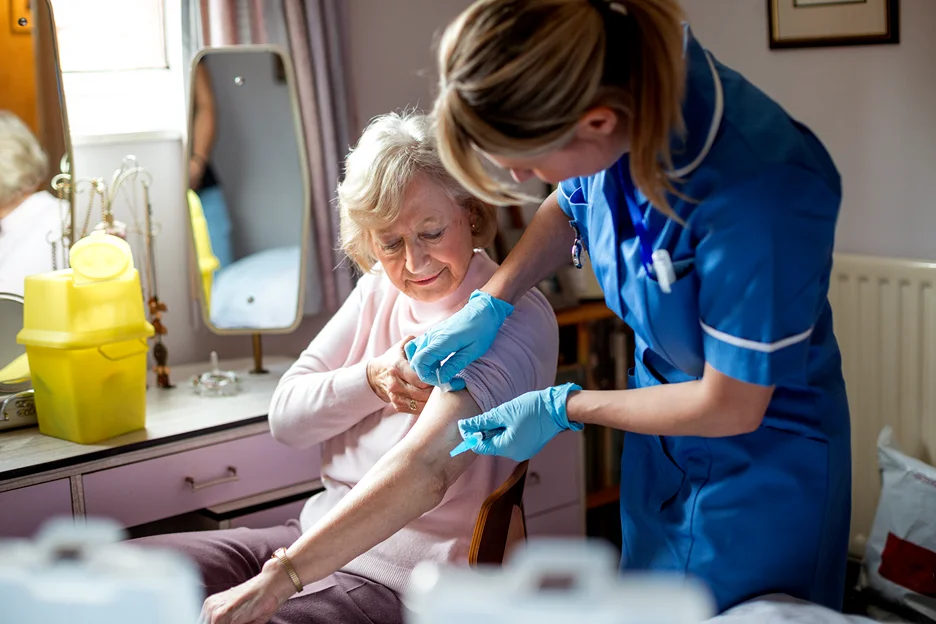
Several considerations guide medical professionals’ choice of needle gauge and length when using a butterfly needle:
Patient Age and Vein Size
Needle gauge should be selected based on patient age and corresponding vein size. Younger children have much smaller veins that require fine 25G to 27G needles. Their skin is also more delicate. Older children generally tolerate a 23G or 25G needle.
For most adult blood draws, a 21G needle is recommended for standard vein size. Some facilities use 23G for patient comfort, but this can prolong draw time. Elderly patients and those on medications may require a smaller 23G to 25G needle due to fragile veins.
Obese patients may need longer needle lengths to reach veins beneath adipose tissue. Alternately, shorter needle lengths are appropriate for children and the elderly with superficial veins.
Purpose of Use
Larger needle gauges are needed for blood donation and transfusion setups. A 21G butterfly needle efficiently accesses blood flow for collection and component separation. For fluid and medication delivery, smaller 25G to 27G needles minimize vein irritation.
Needle Length
Standard needle lengths range from 12.7mm to 25.4mm (0.5 inches to 1 inch). Longer needles can access deeper veins but also increase insertion pain and chance of going through the vein entirely. Shorter needles are preferable for children and the elderly when accessing superficial veins.
Insertion Angle
Butterfly needles should be inserted at a shallow 10 to 30-degree angle to keep the needle tip safely within the vein lumen. A 30 to 45-degree angle risks extravasation of fluids and puncturing the back wall of the vein.
At What Age Can Butterfly Needles Be Used?
There are no set age requirements dictating when a butterfly needle can be used. The decision depends on the child’s physical development, need for the procedure, vein health, and tolerance. Here are some age considerations:
Infants and Toddlers
Butterfly needles are rarely used on infants except for critical procedures like central line placement or blood transfusions. Their extremely small and fragile veins require skilled, specialized handling.
Younger Children
A 25G needle may be used for some blood draws in children as young as 2 to 3 years old. However, direct IV insertion with a straight needle is preferred when possible. The wings make security and stability more difficult with a squirmy child.
Older Children
By age 6 to 7, most children have sufficiently developed veins for a 23G needle IV cannula or blood draw. Their greater understanding also means they can stay still during insertion with reassurance.
Teens
A standard 21G or 23G needle is appropriate for blood draws and IVs in most teenagers, similar to adults. Though fear of needles is common at this age, engaging teens in the process helps them stay calm and cooperative.
Here’s a recommended sizes chart for children for your easier reference:
| Age Group | Butterfly Needle Gauge |
| Toddlers (1-3 years) | 21-23 gauge for arm, hand, or finger draw |
| Young Children (4-9 years) | 21-23 gauge for arm, hand, or finger draw |
| Older Children (10-13 years) | 21-23 gauge for arm, hand, or finger draw |
| Adolescents (14-17 years) | 21 gauge for arm, hand, or finger draw |
Elderly Patients
Butterfly needles with smaller 23G to 25G sizes are best suited for the delicate veins and thinner skin of many elderly patients. A skilled, gentle approach is needed for smooth insertion without bruising.
What Are the Safety Protocols for Butterfly Needle Use?
Universal precautions and safe needle practices must be followed when using butterfly needle devices to avoid complications. Healthcare professionals should adhere to the following safety protocols:
- Wash hands and wear gloves before venipuncture
- Disinfect the injection site with an alcohol wipe in a circular motion
- Apply tourniquet to distend vein 4-6 inches above site
- Insert butterfly needle bevel up at a 10 to 30-degree angle
- Secure wings to the patient’s skin with sterile tape
- Attach the end cap when the needle is not in use
- Engage safety locks on butterfly needle tubing and equipment
- Dispose in sharps container immediately after use
- Use caution with smaller gauge butterfly needles (25g) as they may increase the risk of hemolysis
- Use butterfly needles with safety features that allow one-handed activation to reduce needlestick injuries
- Never attempt to recap butterfly needles after use
- Follow proper technique to avoid repeated punctures and vein trauma
- Release the tourniquet promptly after needle insertion
- Do not leave the tourniquet on for over 1 minute
- Avoid overuse and reuse of the needles
- The needles should not be left inserted for more than a week
- Proper insertion technique is key to avoiding complications
- Safety mechanisms help prevent needlestick injuries and transmission of bloodborne pathogens
- Choose needles with easy one-handed safety activation
- Always activate safety features prior to disposal
Proper needle insertion technique prevents vein trauma, bruising, infiltration, and repeated punctures. Avoid probing and only insert the needle when aligned directly over a palpated vein. Release the tourniquet promptly after needle entry.
The wings provide stability but do not guarantee safety alone. Covering the wings with the gloved finger minimizes accidental needlestick risk. Never attempt to recap butterfly needles after use. Discard them point-first into a sharps container.
Visit Us for Butterfly Needles for Patients Young and Old
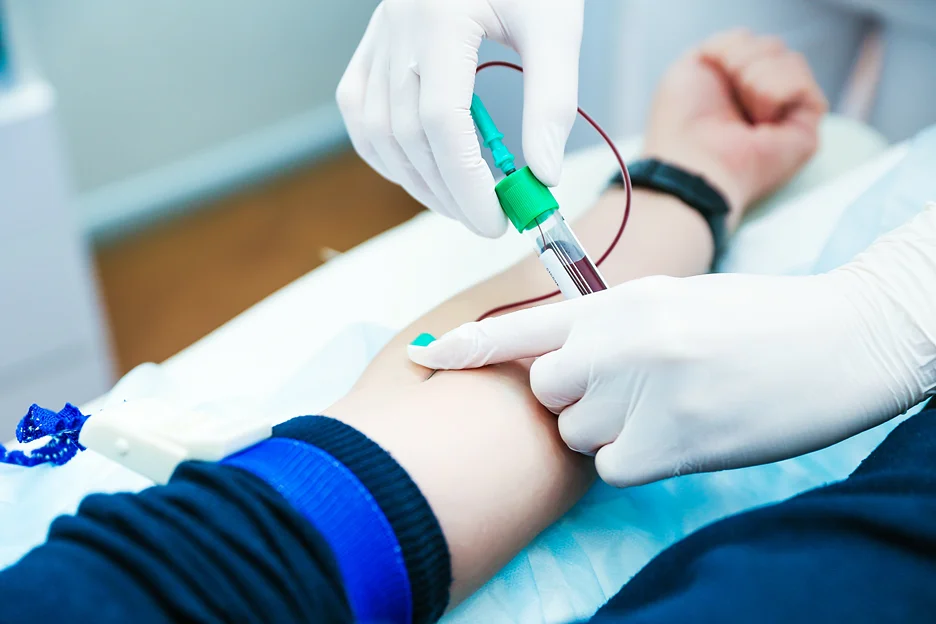
While butterfly needles provide control and stability for vein access, appropriate size selection is vital based on patient age and vein condition.
With optimum needle gauge, length, and careful handling, butterfly needles can facilitate blood draws and IV procedures across all age groups. Keeping safety protocols in mind is equally important for preventing complications.
As a one-stop shop for medical supplies, Face Med Store offers an extensive inventory of butterfly needle kits and accessories. Our wide selection ensures you have the right vascular access products for patients across the age spectrum.
